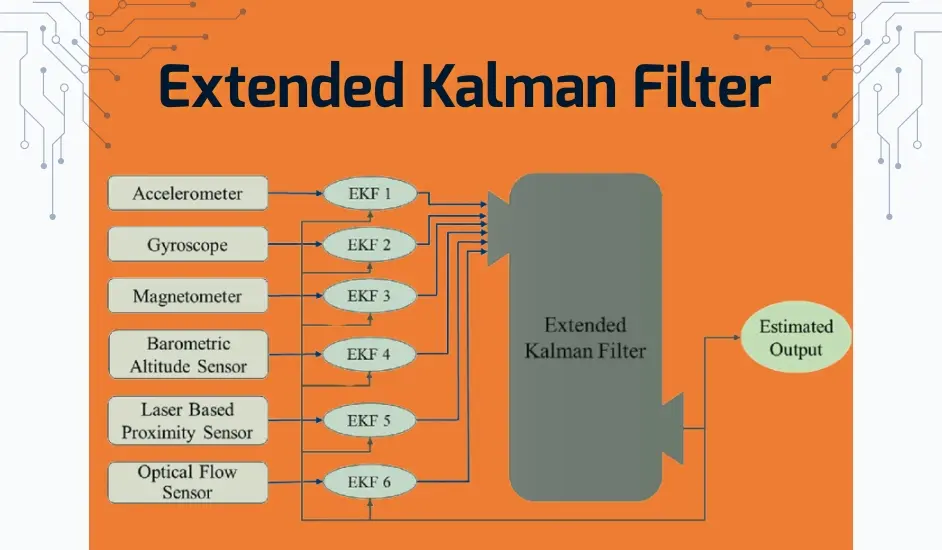Overview
The Extended Kalman Filter (EKF) is an advanced algorithm used for sensor fusion. It combines data from multiple sensors, such as IMU, GPS, and optical flow, to estimate the UAV’s position, velocity, and orientation accurately. The EKF is particularly valuable in dynamic environments where sensor data may be noisy or incomplete.
Importance
- Noise Reduction: By accounting for measurement uncertainties, the EKF provides cleaner, more reliable data.
- Enhanced Stability: Combines sensor inputs to improve the quadcopter’s balance and response.
- Improved Navigation: Enables precise path-following and obstacle avoidance, even in challenging conditions.
Working of EKF
The EKF operates in two main steps:
- Prediction: Using the UAV’s previous state and control inputs, the EKF predicts the current state. This includes estimating position, velocity, and orientation.
- Update: The EKF refines the predicted state using actual sensor measurements, correcting errors and improving accuracy.
This iterative process ensures that the UAV’s state estimation remains reliable, enabling precise control and decision-making during autonomous operations.


